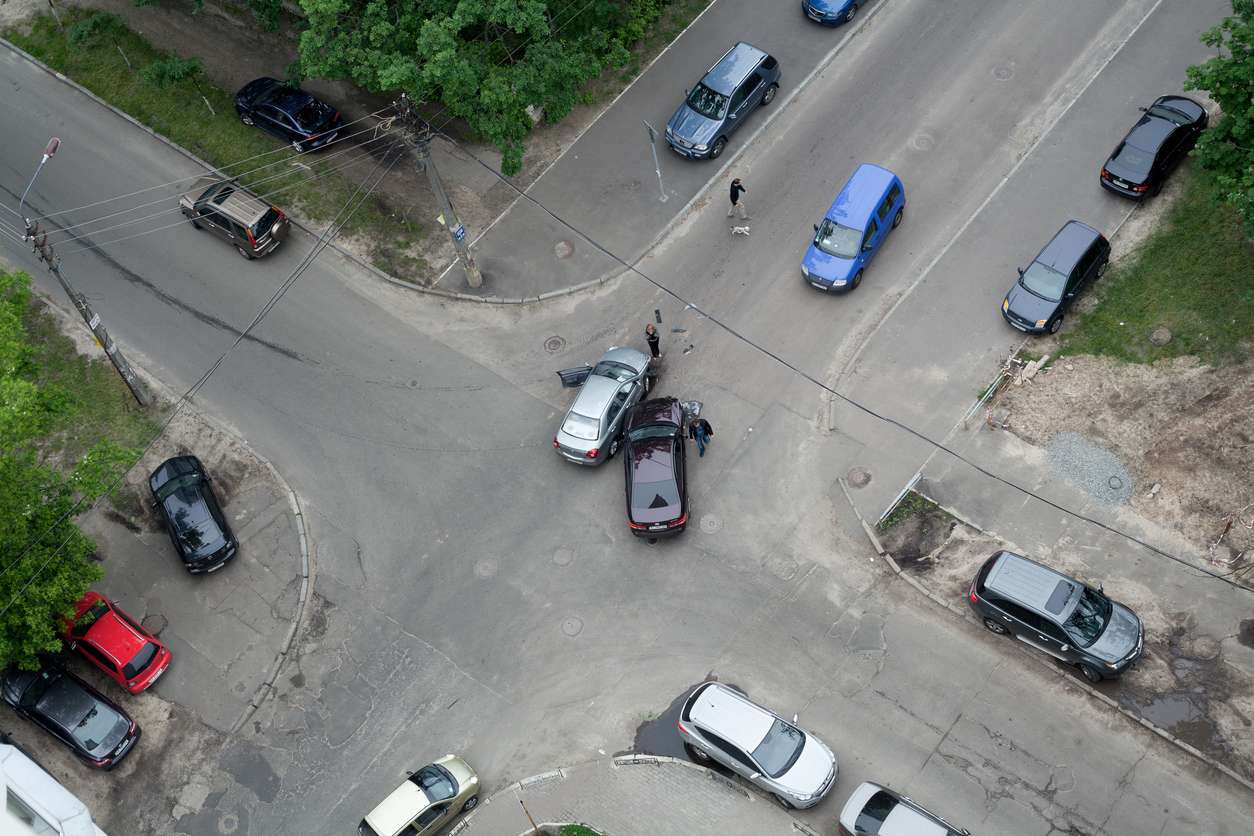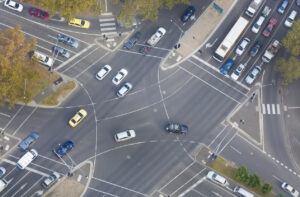- 5 Oct 2025

Navigating the vibrant streets of Austin, Texas, is a daily reality for thousands of drivers, cyclists, and pedestrians. While the city’s growth brings new opportunities, it also introduces new traffic challenges. Beneath the surface of Austin’s bustling energy lies a network of intersections that, despite being part of daily commutes, are fraught with hidden dangers. These overlooked crossroads are responsible for a disproportionate number of accidents, injuries, and even fatalities each year.
The Unseen Risks Lurking at Austin’s Intersections
Many intersections in Austin are notorious for their accident rates, yet some remain under the radar. These are not always the busiest or the most obvious trouble spots. Instead, they are often locations where a combination of heavy traffic, confusing layouts, and high-speed turns create a perfect storm for collisions. The danger is compounded by the city’s rapid development, which brings new drivers and changing traffic patterns that locals and visitors alike must navigate.
Parmer Lane and North Lamar Boulevard: A Persistent Threat
Among the most dangerous roads and intersections in Austin, Texas, Parmer Lane and North Lamar Boulevard stand out. This intersection is characterized by multiple lanes, high speeds, and a complex series of turns that challenge even the most attentive drivers. Rear-end collisions are especially common here, often caused by abrupt stops and drivers misjudging the flow of traffic. Despite efforts to improve safety, including signal adjustments and increased enforcement, this intersection remains a persistent threat to motorists and pedestrians alike.
Riverside Drive and South Pleasant Valley Road: A Hub of Hazard
Riverside Drive and South Pleasant Valley Road is another intersection that consistently ranks among the most dangerous in Austin. The convergence of two major urban roads, combined with heavy rush hour traffic and frequent pedestrian crossings, makes this location particularly treacherous. According to Texas Department of Transportation data, dozens of crashes and injuries occur here each year, prompting the city to prioritize this intersection for future safety improvements.
Trinity and East 7th Street: Pedestrian Peril
Pedestrians face unique risks at Trinity and East 7th Street, which is widely recognized as one of the most hazardous intersections for those on foot in all of Texas. The area’s mix of nightlife, businesses, and dense residential developments leads to a constant flow of people crossing the streets, often in the face of inattentive or speeding drivers. Over the years, this intersection has seen a staggering number of pedestrian crashes and injuries, highlighting the urgent need for continued vigilance and infrastructure enhancements.

Cesar Chavez Street and I-35: Where Highways Meet Downtown Chaos
The intersection of Cesar Chavez Street and I-35 is a prime example of how the meeting point between highway service roads and city streets can amplify risks. Here, high-speed traffic merges with downtown congestion, and the proximity to bars and nightlife districts adds to the unpredictability. The result is a hotspot for serious accidents, including those involving impaired drivers and vulnerable pedestrians. The city’s efforts to address these dangers include targeted enforcement and ongoing evaluation of traffic patterns.
Ed Bluestein Boulevard and Loyola Lane: A Deadly Combination
Ed Bluestein Boulevard and Loyola Lane have gained notoriety for their high accident rates, particularly for pedestrians. This intersection, located in a busy area with significant vehicle and foot traffic, has witnessed numerous serious crashes in recent years. The combination of fast-moving vehicles and frequent pedestrian crossings creates a hazardous environment that demands heightened awareness from all road users.
Martin Luther King Jr. Boulevard and Interstate 35: Complex Traffic Dynamics
The intersection of Martin Luther King Jr. Boulevard and Interstate 35 is another location where complexity breeds danger. The mix of heavy interstate traffic with local thoroughfares leads to frequent congestion and confusion, increasing the risk of collisions. Ongoing infrastructure improvements aim to reduce these risks, but the intersection remains a focal point for accidents in Austin.
U.S. 183 Service Road and Cameron Road: Quick Turns, Big Risks
Quick right turns at the U.S. 183 Service Road and Cameron Road intersection often catch drivers and pedestrians off guard. This spot sees an average of two dozen crashes each year, many involving vehicles making turns too rapidly and failing to yield to crossing pedestrians. The recurring nature of these incidents underscores the need for both driver caution and improved intersection design.
North Lamar and Rundberg Lane: Shopping Center Congestion
North Lamar and Rundberg Lane is a fast-growing area with numerous shopping centers, which means frequent left turns and sudden stops. These traffic patterns often result in collisions, particularly during peak shopping hours. The intersection’s design and the volume of vehicles entering and exiting commercial properties contribute to its reputation as a dangerous spot for drivers.
The Role of Infrastructure and Urban Growth
Austin’s rapid expansion has placed significant pressure on its infrastructure. Many of the city’s most dangerous intersections are located in areas where residential and commercial development outpaces road improvements. As new neighborhoods and businesses emerge, traffic volumes increase, often without corresponding upgrades to traffic signals, signage, or pedestrian pathways. This mismatch between growth and infrastructure creates conditions ripe for accidents and injuries.
City Initiatives to Improve Safety
Recognizing the urgent need to address these dangers, Austin has implemented several initiatives aimed at reducing intersection-related accidents. The Pedestrian Safety Action Plan, for example, focuses on high-risk areas with a history of pedestrian injuries and fatalities. The plan calls for the construction and maintenance of sidewalks, signal timing adjustments, increased police presence, and targeted speed enforcement. These measures have led to some reductions in accident rates, but ongoing vigilance and investment are necessary to keep pace with the city’s growth.
Why Overlooked Intersections Remain Dangerous
Despite increased awareness and city-led improvements, many intersections continue to pose significant risks. Factors such as distracted driving, speeding, and unfamiliarity with local roads contribute to the ongoing danger. In addition, intersections that appear routine or unremarkable may lull drivers into a false sense of security, making them less likely to anticipate hazards.
The Broader Impact on Austin’s Community
The consequences of accidents at these intersections extend beyond the immediate victims. Traffic collisions disrupt daily life, cause property damage, and strain emergency services. For pedestrians and cyclists, the risks are even greater, as they are more vulnerable to serious injuries. The cumulative effect of these incidents highlights the importance of ongoing education, enforcement, and infrastructure investment to protect all road users.
Legal Considerations and Resources
In the aftermath of an intersection accident, understanding your legal rights and responsibilities is crucial. Victims of traffic collisions may face medical bills, lost wages, and long-term rehabilitation. Navigating the legal landscape can be complex, but resources are available to help individuals understand their options and pursue compensation when appropriate. For official information on traffic safety and legal rights, the Texas Department of Transportation provides valuable guidance and resources for those affected by roadway incidents. For more information, visit the Texas Department of Transportation.
Highlighting the Most Dangerous Roads and Intersections in Austin, Texas
When discussing the most dangerous roads and intersections in Austin, Texas, it’s essential to recognize that danger is not always obvious. While some intersections are well-known for their risks, others quietly accumulate accident statistics year after year. Staying informed about these locations and practicing defensive driving can make a significant difference in reducing the likelihood of collisions. For a comprehensive overview of these hazardous spots, including detailed accident data and safety recommendations, visit most dangerous roads and intersections in Austin, Texas.
Conclusion
Austin’s overlooked dangerous intersections are more than just points on a map—they are daily hazards that demand attention from everyone who uses the city’s roads. By understanding where these risks lie and taking proactive steps to drive safely, residents and visitors can help reduce the toll of accidents and injuries. As the city continues to grow, a collective commitment to safety, awareness, and infrastructure improvement will be vital in making Austin’s streets safer for all.
Recent posts
- 5 Oct 2025
- 3 Oct 2025
- 3 Oct 2025
Categories
- Accident & Injury Law (54)
- AI (1)
- Copyright Law (1)
- Criminal & Civil Law (17)
- Disability Law (2)
- Driving Law (2)
- Employment Law (1)
- Estate Planning (2)
- Family & Relationship Law (29)
- Food and Drink (2)
- Gas Exposure (1)
- Health (1)
- Immigration Law (2)
- Injury Claim (1)
- Insurance Law (7)
- Legal (40)
- Lemon Law (4)
- Mediation (3)
- Medical Malpractice (1)
- Property & Business Law (9)
- Severance Agreement (1)
- Travel and Leisure (1)
- Uncategorized (8)
- Worker Compensation (2)
